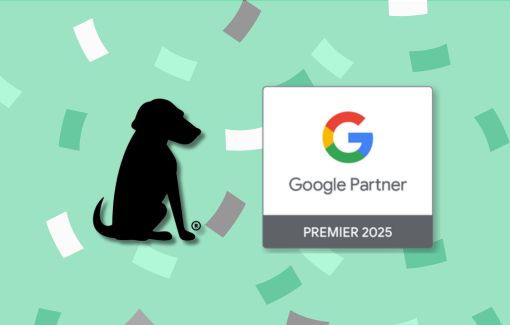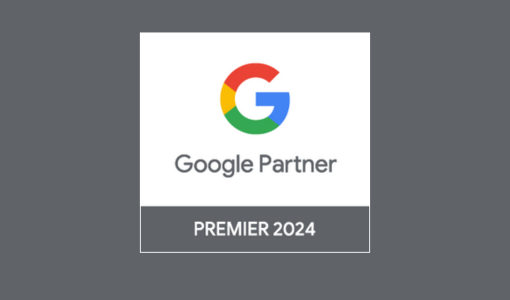The key is to stay flexible. Build a plan that accounts for seasonality and unexpected shifts in demand. Protecting your presence in-market when others cut back can help you capture more shares. Smart forecasting and agile adjustments keep your brand visible without overspending.

Image created using generative AI
As 2026 approaches, tourism brands are facing a shifting landscape that requires careful planning and smart strategy. Thoughtful marketing budget planning has never been more critical. An uncertain global economy is influencing travel demand, while digital marketing continues to evolve at a rapid pace. Artificial intelligence is changing how travelers discover content, how they interact with search, and how brands need to show up online. At the same time, rising advertising costs mean that flat media budget planning is, in reality, shrinking budgets. Effective media budget planning helps ensure your brand does not fall behind while competitors are scaling up.
For growth-minded travel and tourism operators, this makes thoughtful marketing budget planning more important than ever. The right media budget planning strategy can position your brand to stay visible, capture demand, and drive direct bookings when it matters most. Strong planning also sets the tone for the year ahead, giving decision-makers a clear framework to measure performance and adjust before peak seasons arrive.
At BlackDog Advertising, we believe the majority of bookings are won or lost online. That is why we have outlined three core areas to focus on in your 2026 marketing plan:
- Navigating an uncertain economy and shifting travel trends
- Harnessing a rapidly changing digital landscape with AI
- Building strategic solutions for rising advertising costs
Protecting Growth During Unpredictable Travel Cycles
Travel brands are entering 2026 with an economic landscape that continues to shift. Travelers are being more thoughtful about their spending, and competition for their attention is higher than ever. In this environment, agility and foresight are critical. A proactive marketing budget is not just helpful, it is essential for protecting and growing revenue.
When visitor numbers dip, the instinct can be to pull back on spending. History shows that doing the opposite is more effective. Staying visible when competitors cut back helps brands capture a larger share of a smaller market. It also positions your tour, attraction, or experience as a reliable choice that remains top of mind when travelers are ready to book.
Promotions play a key role in this climate. The right offer at the right time can be the nudge a cautious traveler needs to make a decision. Value-driven pricing strategies should be built into every 2026 plan, including:
- Promo codes tailored to your audience
- Dynamic pricing that adapts to demand levels
- Exclusive packages that highlight added value
Agility in spending and pricing will set the strongest brands apart. Building this flexibility into your 2026 marketing budget planning and media budget planning ensures you can respond quickly to changing conditions and maintain growth when the market is unpredictable. It also sends a message of consistency to guests, showing that your brand remains confident and reliable even in an uncertain climate.
How AI Is Reshaping Digital Strategy For Travel Brands
Artificial intelligence is reshaping how travel brands connect with their audiences. From automating tasks to personalizing content, AI has created a new digital environment where visibility depends on how well your website aligns with search behavior. Tools like AI-powered search overviews now pull content directly from trusted sources, which means your site needs to be one of them.
To secure that visibility in 2026, brands should prioritize both content quality and technical performance. High-value content should showcase your expertise, answer traveler questions in detail, and reflect the way people search. Using question-based headers, FAQs, and long-tail search phrases helps ensure your website matches the intent behind searches.
Equally important is the technical side. AI models favor websites that are well structured, fast loading, and easy to navigate. Following core principles of tourism website design such as schema markup, streamlined navigation, and optimized load speeds gives your site the best chance of being recognized as a reliable source.
With third-party cookies disappearing, collecting first-party data is more valuable than ever. Incorporating strong email collection tools into your site should be a central part of your marketing budget planning for 2026. Incentives like exclusive savings or early access can turn casual visitors into engaged subscribers, creating direct channels for communication that strengthen trust and bookings.
BlackDog Advertising recommends weaving these AI-driven strategies into both your marketing budget planning and your media budget planning for 2026. Doing so ensures your brand stays visible, competitive, and prepared for a digital landscape that is evolving faster than ever. Brands that make these investments now will be better positioned to adapt quickly to future shifts in search, content, and consumer behavior.
Strategic Solutions for Increased Advertising Prices
Advertising costs continue to rise, which means a flat budget is really a shrinking one. Treating your marketing budget planning or media budget planning as a fixed, year-long expense is no longer enough to stay competitive. Instead, your planning process should take into account the reality of seasonality, audience behavior, and year-over-year cost increases.
Start with your revenue goals and work backward to determine how much you need to invest. Allocate part of your media budget planning specifically for testing new platforms and placements. Use past performance data to forecast increases in CPC and cost per conversion, comparing 2024 against 2025, and build those realities into your 2026 marketing budget planning. Keep measuring results and be ready to move resources toward the channels and tactics that are producing the strongest returns.
One of the most important strategies BlackDog Advertising uses with our partners is forecasting high and low seasons, making sure budgets are aligned with the rhythms of demand. By planning for peaks and slower periods, you can ensure your campaigns are competitive at the right moments and cost-efficient during others. Strategically managing your marketing budget planning and media budget planning transforms them from static expenses into tools for growth.
Plan With Purpose & Grow With Confidence
By proactively planning for economic shifts, embracing the evolving digital landscape, and aligning your marketing budget planning with data-driven choices, you can move your brand forward with confidence. BlackDog Advertising believes that intentional media budget planning is one of the strongest tools travel brands can use to increase direct bookings and grow in 2026. Smart marketing budget planning and media budget planning together ensure your brand is ready to compete and thrive in 2026 and beyond.
Frequently Asked Questions
Marketing budget planning looks at the bigger picture, from creative campaigns to promotions. Media budget planning focuses on how much you’re putting into channels like paid search, social, and display. Both need to work together so you’re balancing long-term brand growth with direct response results.
AI is already shaping how travelers discover brands. Content needs to be optimized for AI-powered search and websites must be structured for speed, clarity, and authority. Budgeting for AI-driven content, tools, and first-party data collection will make sure your brand isn’t left behind.
Treat rising costs as part of the plan, not a surprise. Build in increases when you forecast, and focus spend where you see the best performance. Testing new platforms, shifting spend quickly, and using strong data analysis can help stretch your media budget planning further.
Focus on reach, engagement, promo code use, and Google search impressions. These numbers give a clear picture of whether your spend is building visibility and driving direct bookings. Vanity metrics like likes and follows don’t show if your investment is actually growing revenue.








